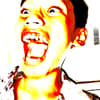Podcast
Questions and Answers
What does the symbolism of a journey often represent in literature?
What does the symbolism of a journey often represent in literature?
- Personal growth and discovery (correct)
- A quest for knowledge
- A physical escape
- A break from reality
Which of the following best describes allegory?
Which of the following best describes allegory?
- A story filled with humor
- A plot that rejects realism completely
- A story that has a deeper meaning beneath the surface (correct)
- A narrative with a single superficial meaning
Which type of irony involves a contrast between what a character believes and what the reader knows to be true?
Which type of irony involves a contrast between what a character believes and what the reader knows to be true?
- Verbal irony
- Allegorical irony
- Situational irony
- Dramatic irony (correct)
Which of the following symbolizes unity or commitment in literature?
Which of the following symbolizes unity or commitment in literature?
What can excessive emotion in a narrative commonly be referred to as?
What can excessive emotion in a narrative commonly be referred to as?
Which of the following best indicates a symbol's meaning in a narrative?
Which of the following best indicates a symbol's meaning in a narrative?
In which literary technique does irony help to critique human behavior?
In which literary technique does irony help to critique human behavior?
What does the symbolism of a flag typically represent in literature?
What does the symbolism of a flag typically represent in literature?
What was the reason for Group Two's activity related to cartolina illustrations?
What was the reason for Group Two's activity related to cartolina illustrations?
Which teacher was responsible for the landscaping assignment?
Which teacher was responsible for the landscaping assignment?
What type of goods did the vacationing teacher return with?
What type of goods did the vacationing teacher return with?
What did Miss Noel jokingly comment about during a faculty meeting?
What did Miss Noel jokingly comment about during a faculty meeting?
Who was particularly critical of Miss Noel's summer courses?
Who was particularly critical of Miss Noel's summer courses?
What does the term 'deus ex machina' imply in a story?
What does the term 'deus ex machina' imply in a story?
What was the relationship between Miss Noel and Mrs. Olbes?
What was the relationship between Miss Noel and Mrs. Olbes?
What was the nature of the assignment given to the fourth group of freshman boys?
What was the nature of the assignment given to the fourth group of freshman boys?
Which of the following best describes flat characters?
Which of the following best describes flat characters?
What is a key characteristic of dynamic characters?
What is a key characteristic of dynamic characters?
What was Miss Noel's latest teaching approach that Mr. Olbes found bothersome?
What was Miss Noel's latest teaching approach that Mr. Olbes found bothersome?
What does 'indirect presentation' of characters aim to achieve?
What does 'indirect presentation' of characters aim to achieve?
Which of the following principles of characterization states that characters should appear realistic?
Which of the following principles of characterization states that characters should appear realistic?
What is the effect of a static character in a narrative?
What is the effect of a static character in a narrative?
What is Mr. Sawit's role at the institution?
What is Mr. Sawit's role at the institution?
What can best define the term 'epiphany' in the context of character development?
What can best define the term 'epiphany' in the context of character development?
Which characteristic is NOT typically associated with round characters?
Which characteristic is NOT typically associated with round characters?
What unfortunate event happened to Mr. Ampil?
What unfortunate event happened to Mr. Ampil?
What concern does Mr. Sawit express about his orchids?
What concern does Mr. Sawit express about his orchids?
How did Mr. Ampil's colleagues feel about his dedication?
How did Mr. Ampil's colleagues feel about his dedication?
What was Miss Noel's initial reaction to the news of Mr. Ampil's death?
What was Miss Noel's initial reaction to the news of Mr. Ampil's death?
What does Mr. Sawit imply about Mr. Ampil's financial situation?
What does Mr. Sawit imply about Mr. Ampil's financial situation?
Which method did Mr. Ampil use for transportation to distant schools?
Which method did Mr. Ampil use for transportation to distant schools?
What misconception did Miss Noel have about teachers and supervisors?
What misconception did Miss Noel have about teachers and supervisors?
What task was the Woodworking instructor unexpectedly assigned to do?
What task was the Woodworking instructor unexpectedly assigned to do?
How did Miss Noel respond to Mrs. Olbes' request for help with her zipper?
How did Miss Noel respond to Mrs. Olbes' request for help with her zipper?
What items were hastily hidden in Mr. Olbes' desk drawer?
What items were hastily hidden in Mr. Olbes' desk drawer?
What was the dress code for instructors on Flag Day?
What was the dress code for instructors on Flag Day?
What did the Social Studies teacher do when presenting the sampaguita garlands?
What did the Social Studies teacher do when presenting the sampaguita garlands?
What was Miss Noel's emotional state after her encounter with Mrs. Olbes?
What was Miss Noel's emotional state after her encounter with Mrs. Olbes?
What role did the runner posted at the town gate serve?
What role did the runner posted at the town gate serve?
How did Mr. Olbes react upon noticing the approaching party?
How did Mr. Olbes react upon noticing the approaching party?
What was the total cost of the food items mentioned?
What was the total cost of the food items mentioned?
What were the teachers of Group Two tasked with procuring?
What were the teachers of Group Two tasked with procuring?
Who was intended to sleep on the four-poster bed in the Home Economics Building?
Who was intended to sleep on the four-poster bed in the Home Economics Building?
What was Group Three responsible for during the preparations?
What was Group Three responsible for during the preparations?
What did the teachers do to obtain the necessary items for bedding?
What did the teachers do to obtain the necessary items for bedding?
What did the classroom walls mainly lack throughout the year?
What did the classroom walls mainly lack throughout the year?
What was the condition of the teachers' lesson plans and theme books before the preparations?
What was the condition of the teachers' lesson plans and theme books before the preparations?
What kind of pillows were placed against the headboard of the four-poster bed?
What kind of pillows were placed against the headboard of the four-poster bed?
Flashcards
Deus Ex Machina
Deus Ex Machina
A literary device where a god intervenes in a story to save the protagonist from a dire situation.
Characterization
Characterization
The process of revealing a character's personality and traits through their actions, words, and thoughts.
Flat Characters
Flat Characters
Characters whose personalities are simple and easily defined.
Round Characters
Round Characters
Signup and view all the flashcards
Stock Characters
Stock Characters
Signup and view all the flashcards
Static Characters
Static Characters
Signup and view all the flashcards
Dynamic Characters
Dynamic Characters
Signup and view all the flashcards
Epiphany
Epiphany
Signup and view all the flashcards
Conflict in Literature
Conflict in Literature
Signup and view all the flashcards
Dilemma in Literature
Dilemma in Literature
Signup and view all the flashcards
Allegory
Allegory
Signup and view all the flashcards
Fantasy Genre
Fantasy Genre
Signup and view all the flashcards
Humor in Literature
Humor in Literature
Signup and view all the flashcards
Irony in Literature
Irony in Literature
Signup and view all the flashcards
Sentimentality in Literature
Sentimentality in Literature
Signup and view all the flashcards
Linear Plot
Linear Plot
Signup and view all the flashcards
Symbolism
Symbolism
Signup and view all the flashcards
Imagery
Imagery
Signup and view all the flashcards
Humor
Humor
Signup and view all the flashcards
Irony
Irony
Signup and view all the flashcards
Dilemma
Dilemma
Signup and view all the flashcards
Satire
Satire
Signup and view all the flashcards
Study Notes
Course Objectives
- Understand the elements of fiction and their connection to contemporary literature.
- Discuss the elements of fiction.
- Identify and examine elements of fiction in short stories.
- Interpret the elements found in a provided short story.
Elements of Fiction
- Conflict: A clash of actions, ideas, desires, or wills.
- Man vs. Himself
- Man vs. Man
- Man vs. External Force (nature, society, or fate)
- Man vs. Nature (environment)
- Protagonist: The central character involved in the conflict, either sympathetic or unsympathetic.
- Antagonist: Any force that opposes the protagonist.
- Suspense: A technique creating uncertainty and anticipation in the reader.
- Ending: The resolution of the story.
- Mystery: An unusual set of circumstances requiring explanation.
- Dilemma: A choice between two undesirable options.
- Logical and believable resolution.
- Surprise ending: An unexpected turn, providing meaningful insights.
- Happy ending: Common in commercial fiction.
- Unhappy ending: Common in literary fiction.
- Indeterminate ending: No definitive resolution, but not unresolved.
- Themes: A central insight into life presented in the story; a unifying generalization.
- Plot Manipulation: Unjustified shifts orchestrated by the situation or characters.
Characterization
- Direct Presentation: Characters are described explicitly, usually by other characters in the story.
- Indirect Presentation: Characters are shown through their actions and dialogue; the reader infers their traits and motivations.
- Flat Characters: Simple, having only one or two traits, easily summarized.
- Round Characters: Complex, multi-faceted, with various traits, acting realistically.
- Stock Characters: Stereotypical figures, recurrent in fiction, easily recognized.
- Static Characters: Do not change significantly throughout the story.
- Dynamic Characters: Undergo meaningful change during the story.
Point of View
- Omniscient: The narrator knows and can reveal the thoughts and feelings of all characters.
- Third Person Limited: The narrator focuses on one character's perspective, only knowing thoughts and feelings of this chosen character.
- First Person: The story is told from the perspective of a character within the story.
- Objective: The narrator reports events like a detached observer, limited to what is seen and heard.
Symbolism
-
Symbol: Something that means more than its literal meaning, often representing abstract ideas.
-
Object, person, situation, action, or another element.
-
Identifying clues: repetition, emphasis, positioning in the story
Studying That Suits You
Use AI to generate personalized quizzes and flashcards to suit your learning preferences.





